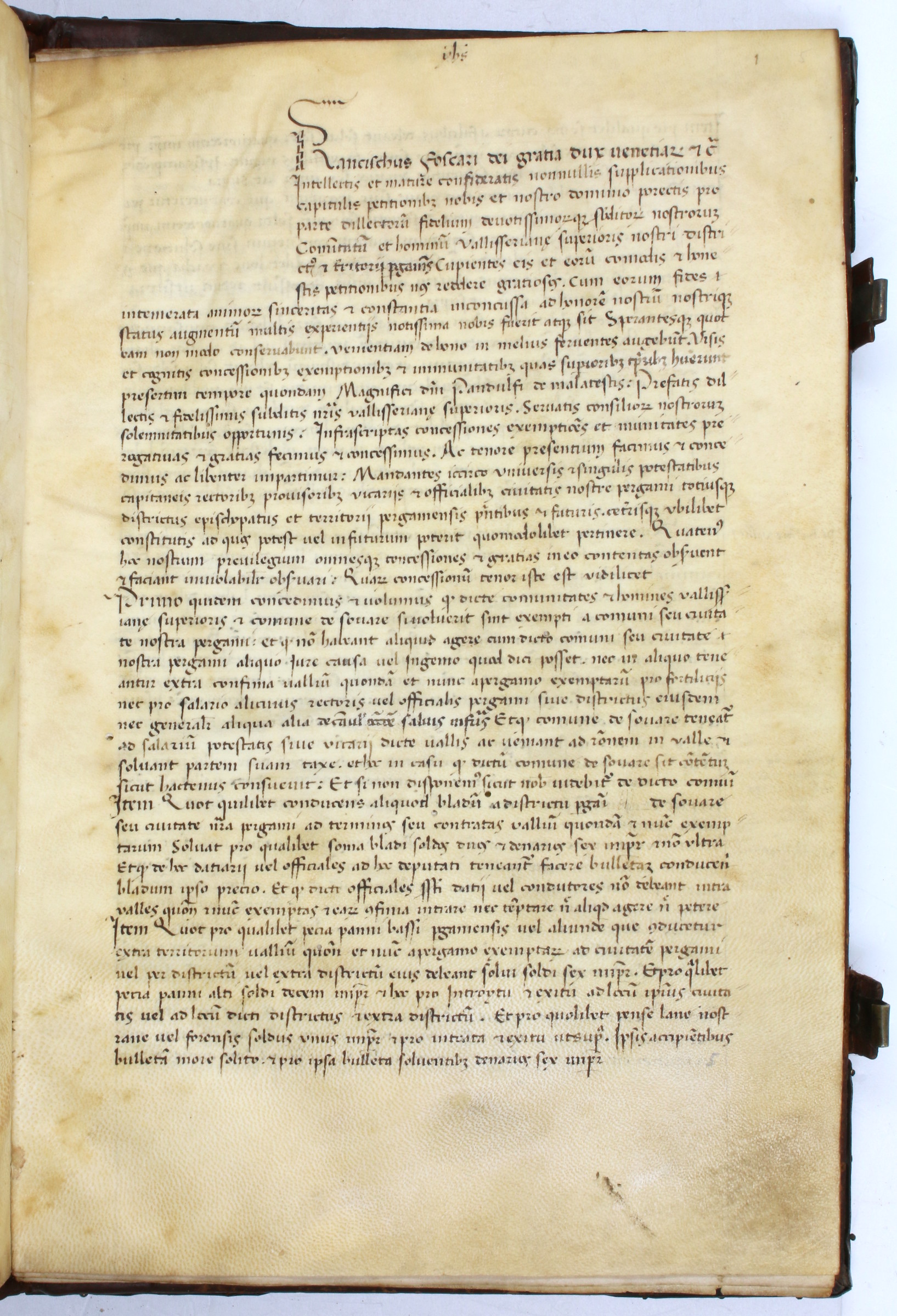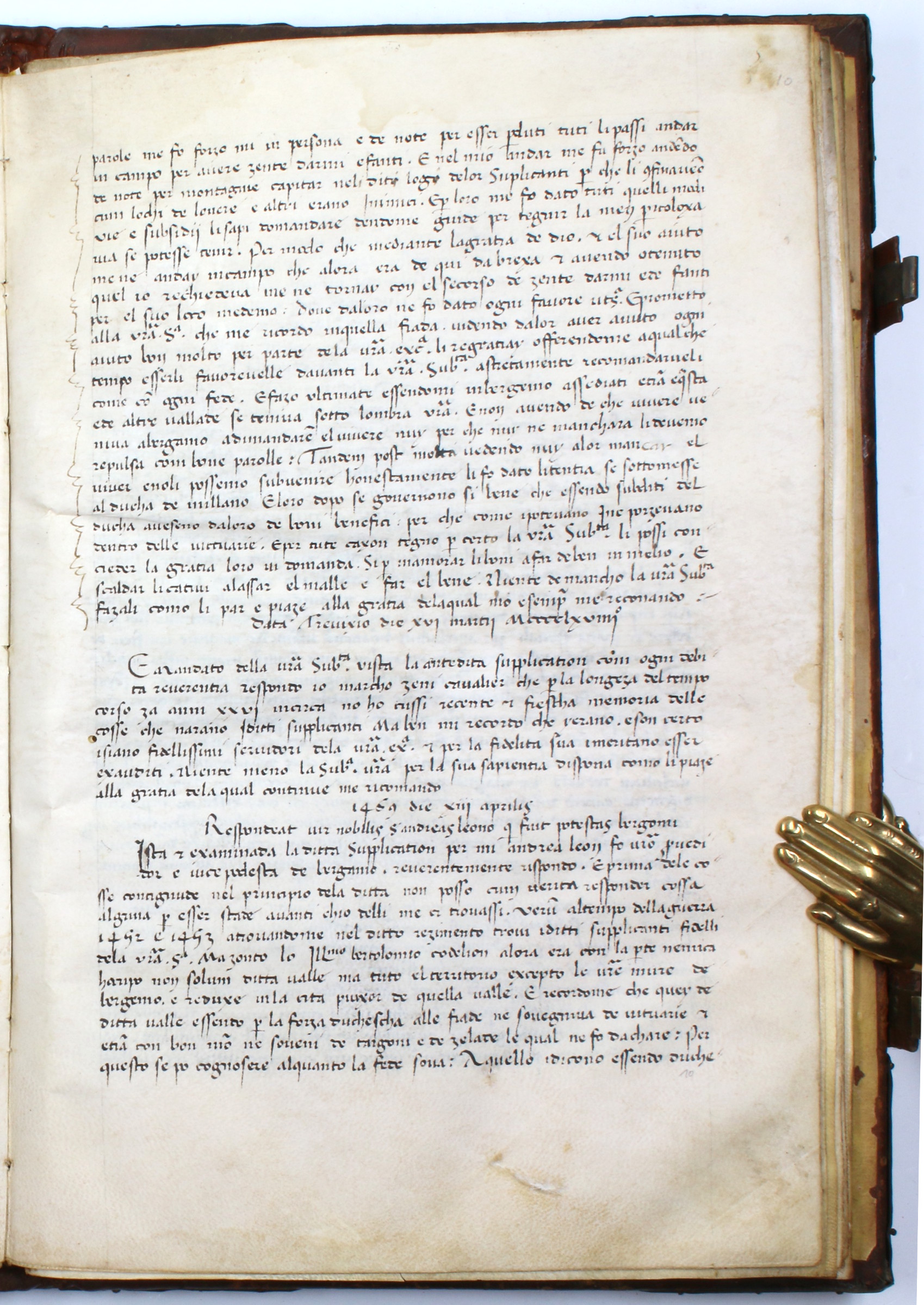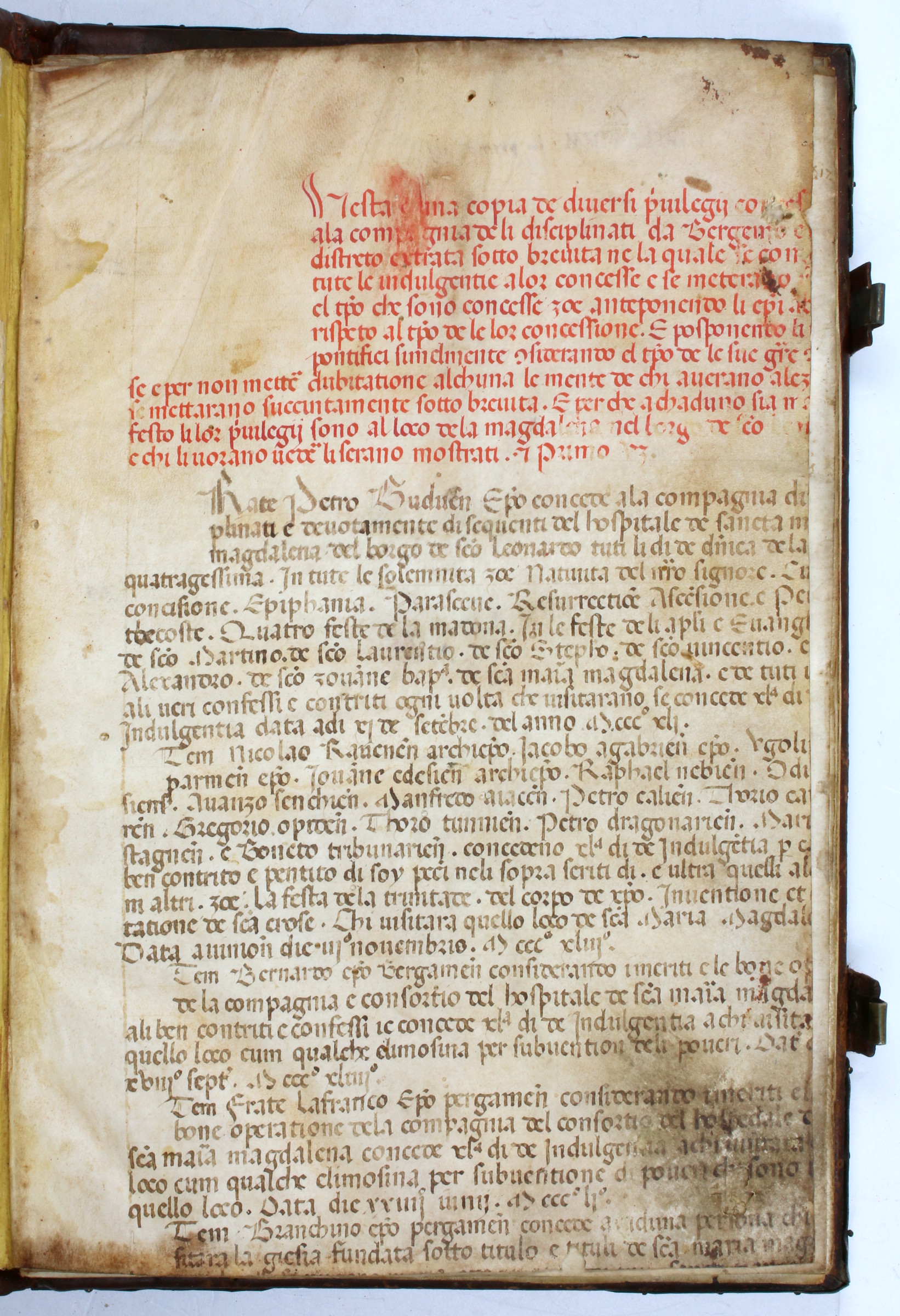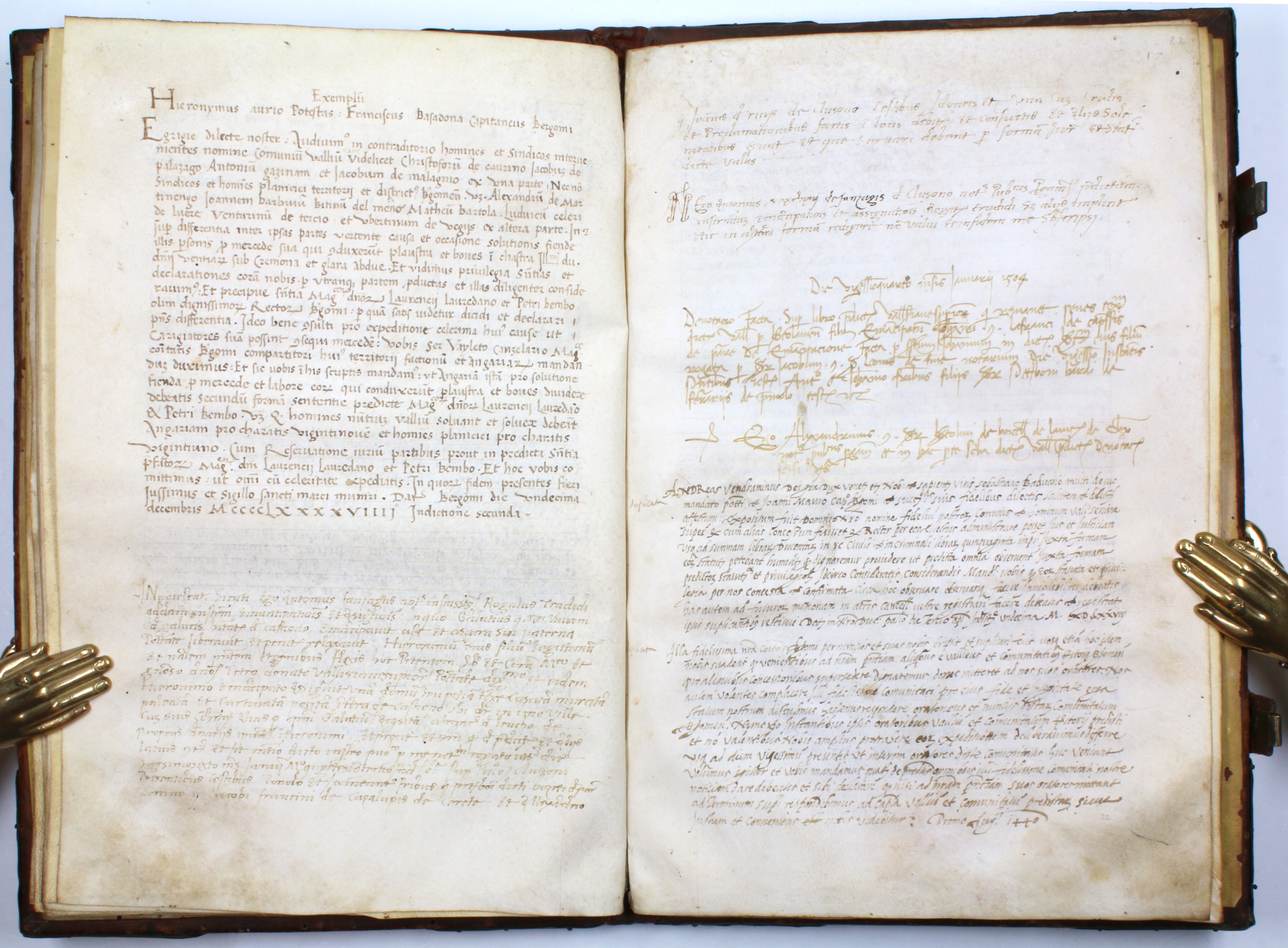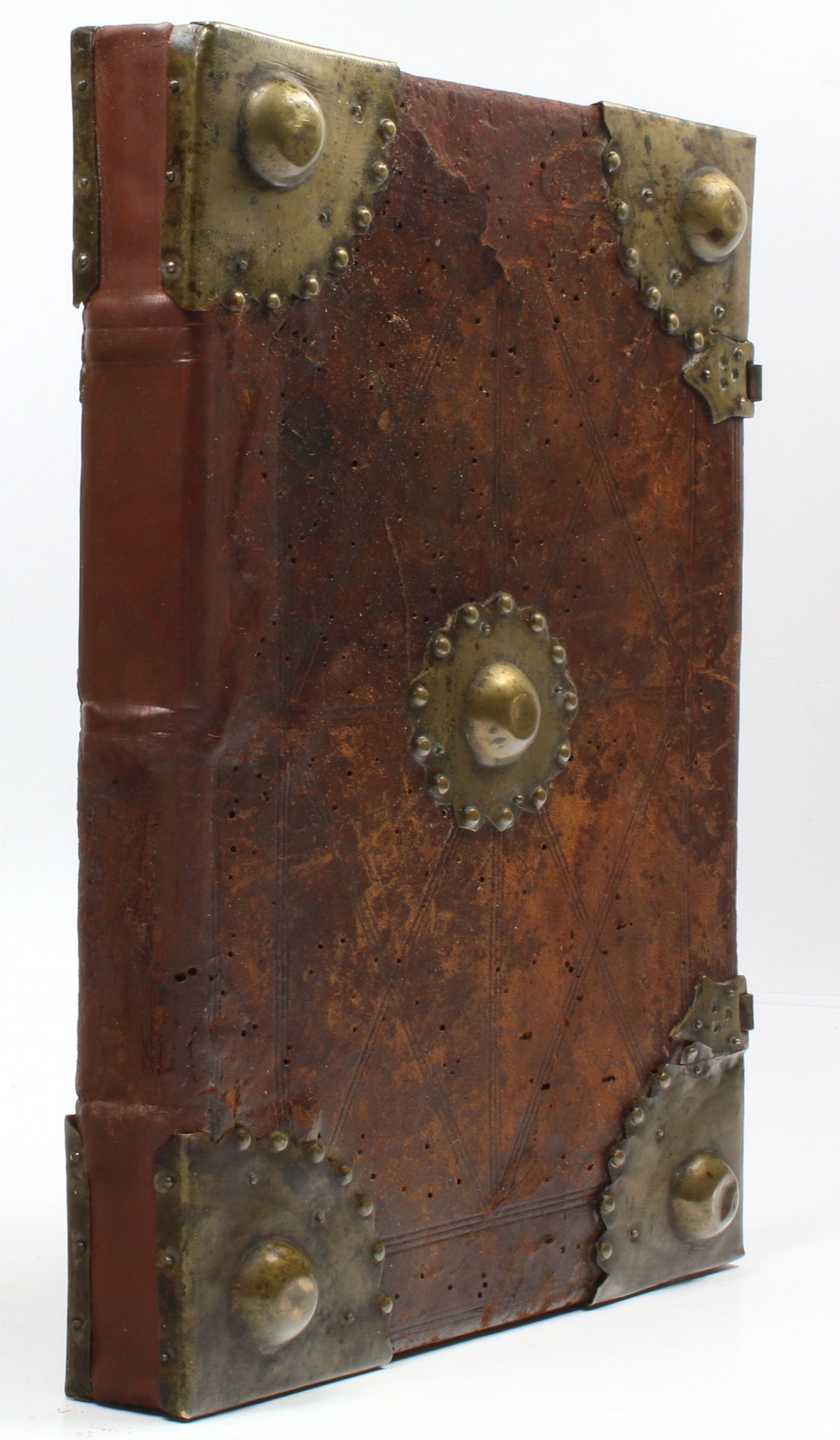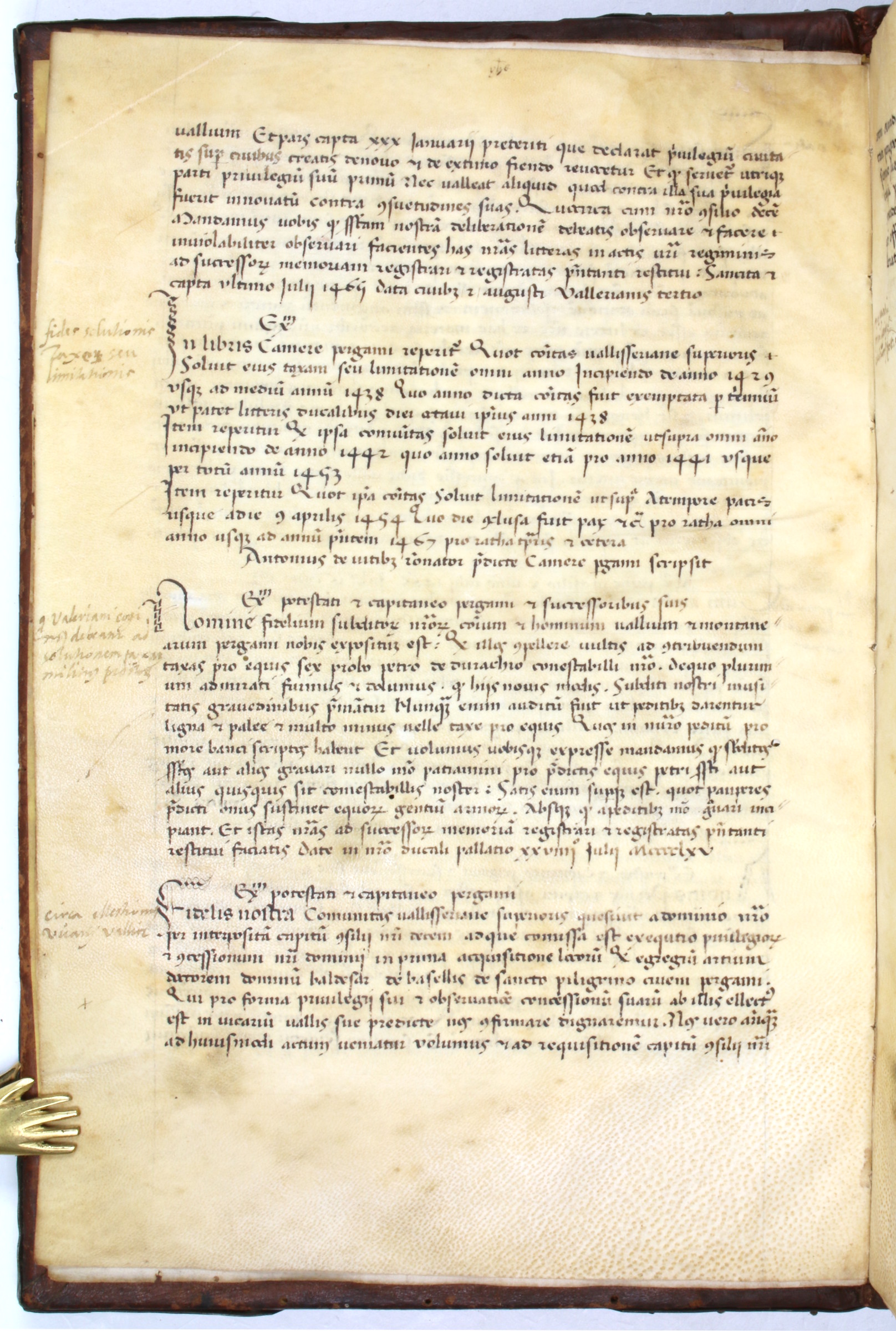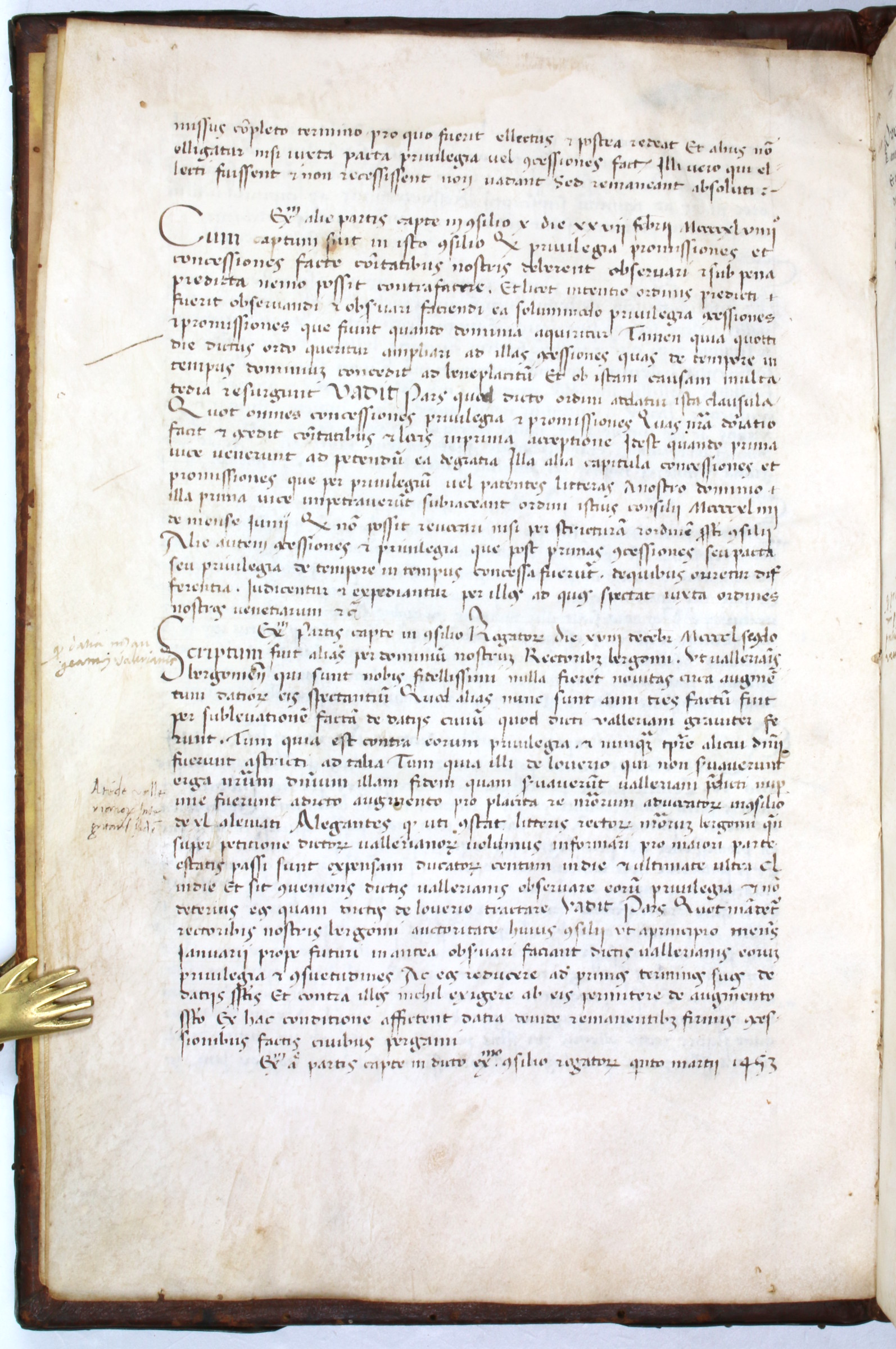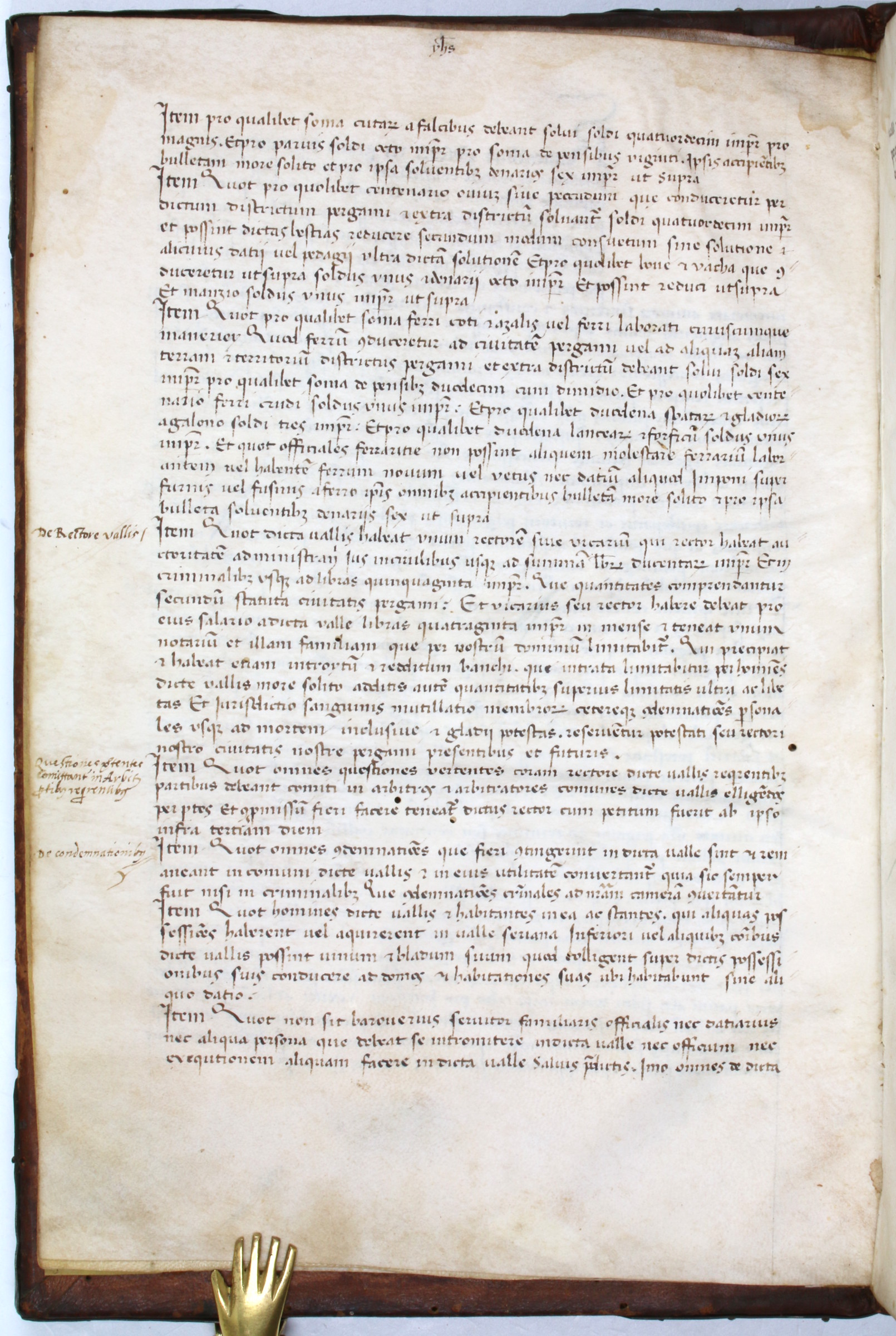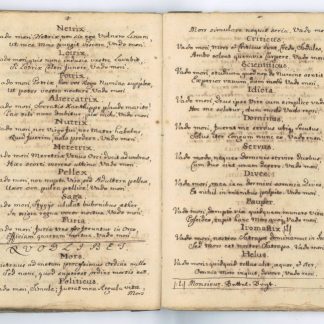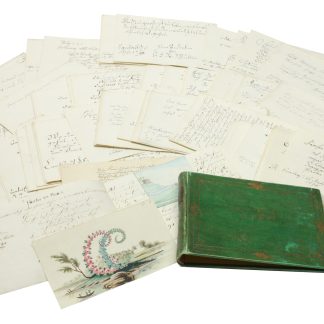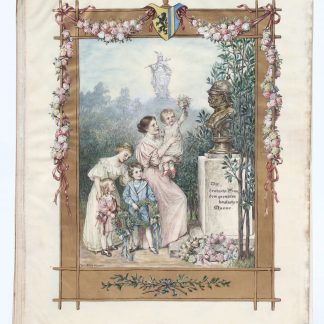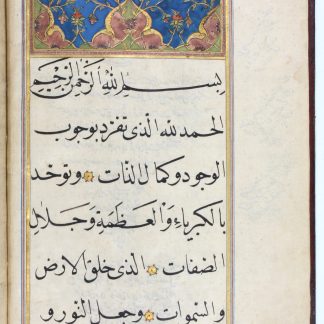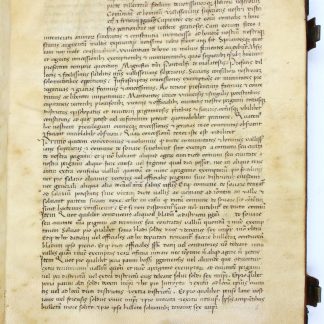Manuscript records by the self-flagellants of Bergamo
[Manuscript of privileges granted to the flagellants of Bergamo].
Folio (210 x 325 mm). 44 ff. Italian and Latin manuscript on vellum and paper. Several scripts and hands, from the 15th to the 17th century, with the final 17th century section on 16 ff. of paper rather than vellum. Contemporary Gothic full leather ruled in brown, with large brass spandrels and navels and two brass clasps.
€ 35.000,00
A manuscript in Latin and Italian recording the granting of privileges to the "Disciplinati" of Bergamo, better known in English as the Flagellants. In Bergamo and elsewhere, the flagellants constituted groups of laypeople who gathered together into confraternities where, concerned for the salvation of their souls, they submitted to a life of prayer and penance outside the traditional bounds of the monastery. As their name suggests, their chief penitent ritual was the famous practice of self-flagellation. For late medieval and early modern flagellants, the aim of this self-flagellation was to repeat and experience on their own bodies the suffering endured by Christ during the Passion.
Referring to themselves as "battuti" or "disciplinati," the flagellants found fertile ground for converts to their particular manner of worship in the fractured landscape and social structures of Europe during the height of the Black Death. In Bergamo in particular, the flagellant confraternities also developed into a political force in a chaotic period characterized by fratricidal struggles between Guelphs and Ghibellines, who fought for control of the city-states of the Northern Italian peninsula through end of the 14th century. By the time of the earliest entries in this manuscript, flagellant confraternities were already situated as an integral part of Bergamo's social and political life.
The manuscript contains a presentation in Italian and French of the first privileges granted in the 14th century (fol. 1), followed by a chronological table summarizing the privileges granted in the 15th to 17th centuries, copied in the 17th century (ff. 2-2v). Manuscript copies of these privileges follow, starting with that of 1428 and ending in 1499, the earliest possible date of the manuscript (ff. 5-21v). Copies of 16th century texts relating to the flagellants follow, the last piece dated 1591. Finally, a text copied in the 17th century on paper: Capitoli ordine da esser osservati circa la elettione del clarissimo podesta et proveditor di Val Seriana superiore (ff. 39-44).
Covers rubbed and spine professionally repaired, with one leaf trimmed and some light soiling to interior. Well preserved.

